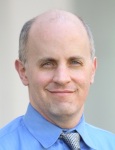| Teaching Religious Studies in Stand-alone MA Programs: Guest Editor's Introduction |
![PDF-NOTE: Internet Explorer Users, right click the PDF Icon and choose [save target as] if you are experiencing problems with clicking.](http://rsnonline.org/templates/rsntemplate-smallmasthead/images/pdf_button.png) |
 |
|
Page 1 of 2
Issue Guest Editor: Stephen C. Berkwitz, Missouri State University
Unique Issues in Stand-Alone MA ProgramsThe Master of Arts student in religion/religious studies is almost a forgotten figure in the field. Compared to studies about teaching religion in PhD and MDiv programs, there has been much less attention paid to how professors may teach effectively to MA students. In many doctoral programs, the MA degree is treated like a transitional stage to prepare students for dissertation research. Meanwhile, MDiv degrees typically prepare students for pastoral and other forms of ministry. For those of us who teach in stand-alone MA programs (i.e., graduate programs that offer an MA degree but not the PhD), we have found surprisingly few sources that offer reflection or guidance on improving our teaching of MA students. In September 2010, representatives from twelve stand-alone MA programs in religion met on the campus of Missouri State University, Springfield, for a two and one-half day workshop to assess teaching and learning in MA programs. Sponsored by a Large Project Grant from the Wabash Center for Teaching and Learning in Theology and Religion, our group met and discussed a variety of issues including addressing diverse groups of graduate students, teaching gateway courses and independent study courses to MA students, teaching split-level or mixed courses comprising both undergraduate and master’s students, and the assessment of learning at the end of a terminal master’s degree. The conversations and exercises in the workshop contained collaborative sustained reflections on how to enhance the education of MA students in the field. The essays that appear in this special issue of Spotlight on Teaching have mostly developed out of this workshop. Through our discussions and a survey of our respective MA programs, we discovered that we were not quite as isolated or unique as we previously thought. It was apparent that we all share diverse student populations who pursue an MA in religion for a wide variety of reasons. Some students in stand-alone MA programs in religion go on to doctoral programs elsewhere and complete a PhD to obtain employment in the professoriate. However, the survey of our programs found that in most institutions, MA students who planned to proceed on to doctoral studies ranged from around 25 to 50 percent. Other MA graduates have gone into other educational positions in high schools or community colleges, some have chosen to embark upon ministerial or church work, and still others pursue careers in social and nonprofit work, the legal profession, government employment, journalism, and library science.
Furthermore, given that stand-alone MA programs rarely have the resources or faculties to match those departments or schools that house PhD programs, we are expected to "do more with less," offering courses and training for students whose interests range from professional specialization to personal enrichment. We often must supplement our regular graduate course offerings with independent study courses or "split-level" courses that combine Master’s and undergraduate students in the same classroom. And we often must develop a menu of degree requirements to satisfy the diverse needs of our students, some of whom wish to write a thesis and enroll in a doctoral program and others who are content to compile a portfolio of their coursework in order to complete a degree that leads to a different career or personal objective. Clearly, teachers in stand-alone MA programs face considerable challenges when teaching graduate students in a context that may differ substantially from their own graduate experiences in doctoral programs. And yet, as long as the market for tenure-track professors in religious studies remains tight, the long-term health of the field will depend a great deal upon how well it can prepare students to assume a variety of other careers outside academia. Stand-alone MA programs, in this way, occupy an important, although underappreciated, niche in graduate education. Our programs demonstrate that the advanced study of religion can lead not only to doctoral research or a career in ministry, but also facilitate success in other professions and nurture an individual’s personal interests in the subject. And because we are not obliged to train and place doctoral students in the field, we are able to focus more attention on teaching Master of Arts students and helping them to define and meet their various educational goals. |
 Spotlight on Teaching
Spotlight on Teaching
 Stephen C. Berkwitz is professor of religious studies at Missouri State University. His teaching and research interests include Buddhist studies, South Asian religions, religion and colonialism, and theories of religion. He is the author of Buddhist History in the Vernacular: The Power of the Past in Late Medieval Sri Lanka (Brill, 2004), South Asian Buddhism: A Survey (Routledge, 2010), and a forthcoming book entitled Buddhist Poetry and Colonialism: Alagiyavanna and the Portuguese in Sri Lanka (Oxford University Press). Berkwitz also serves as series editor of the Routledge Critical Studies in Buddhism Series, book review editor of Religion, and co-Chair of the Stand-alone MA Program in Religion Seminar for the American Academy of Religion.
Stephen C. Berkwitz is professor of religious studies at Missouri State University. His teaching and research interests include Buddhist studies, South Asian religions, religion and colonialism, and theories of religion. He is the author of Buddhist History in the Vernacular: The Power of the Past in Late Medieval Sri Lanka (Brill, 2004), South Asian Buddhism: A Survey (Routledge, 2010), and a forthcoming book entitled Buddhist Poetry and Colonialism: Alagiyavanna and the Portuguese in Sri Lanka (Oxford University Press). Berkwitz also serves as series editor of the Routledge Critical Studies in Buddhism Series, book review editor of Religion, and co-Chair of the Stand-alone MA Program in Religion Seminar for the American Academy of Religion.